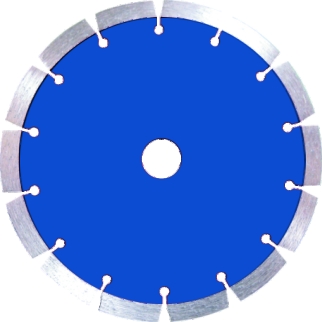
Service Hotline:
+86 15233213652
+998 932213533

+86 15233213652
+998 932213533

Due to the continuous development of diamond saw blades , its own application field has developed into the field of diamond wall groove saw blade processing. Compared with the sawing process of wood and aluminum, wall groove processing is more difficult.
As we all know, the reason why stone is hard is due to the quartz it contains. Among them, the hardness of quartz in nature reaches 7 on Mohs hardness scale, while the hardness of our diamond wall groove saw blade tip reaches 10 on Mohs hardness scale.
Strength versus strength is the best embodiment of the principle of saw blade cutting materials, but frankly speaking, no matter how good the wall groove saw blade is , it will wear out after a period of use. Once the wear and tear problem is not solved well, corporate procurement expenditures will inevitably increase significantly.
At present, diamond wall groove saw blades are suitable for sawing wood, aluminum, or stone. Wear is inevitable when using these high-performance, multi-edged tools, let alone one with a hardness of 10 on the Mohs scale.
For saw blade users, if the wear problem occurs in advance or cannot be postponed, it will affect their own sawing processing costs. To take targeted measures, we still need to start with the inducements.
In fact, neither saw blades nor ordinary carbide saw blades are immune to wear and tear. From the manufacturing and transportation to the use stage of the saw blade, there are all links that can easily cause the saw blade to wear out.
Regardless of the quality control in the transportation process, just take the use of wall groove saw blades as an example. Severe mechanical impact, strain, thermal wear, etc. during sawing of profiles are all causes of saw blade wear.
According to the current technical level, before the material technology of manufacturing substrate and cutter head is qualitatively improved, in order to effectively delay the point of wear of the saw blade, temperature control and grinding of the saw blade is the key. Among them, doing a good job of cooling and lubricating the wall groove saw blade
during high-speed rotation will effectively prevent the saw blade from thermal wear due to uneven heat dissipation. However, the above measures can only delay the time when the wall groove saw blade wears out. After the diamond saw blade really wears out, you will need to use the saw blade repair technology of grinding.
Let’s take the grinding process as an example. For a piece that needs to be grinded, it usually goes through up to 18 processes. From checking the degree of wear to fine grinding of the front and rear corners, damage can be repaired through a set of procedures.
After grinding, the cutting performance of the saw blade can be restored to the original performance. At the same time, due to its excellent basic performance, it can be sharpened 3 to 5 times more often than ordinary carbide saw blades.
From the essence of grinding, it is a saw blade repair technology. The extent to which a saw blade can be repaired is closely related to the performance of the original saw blade.
The powerful performance of a single chip is due to its inherent good quality. After the saw blade wears out, whether a single piece of worn diamond saw blade can continue to exert residual heat depends on whether it has been sharpened.
An old man is restless, but his ambition is to reach a thousand miles; the sword of a wall trough saw blade never grows old, and the success lies in sharpening the saw blade. Whether it is ordinary users or corporate users, making full use of diamond grinding can really reduce the frequency of their own purchases, thereby reducing sawing costs.

Scan Code